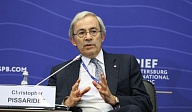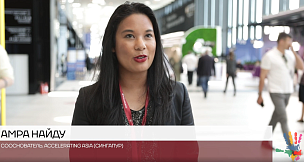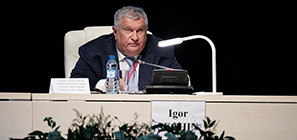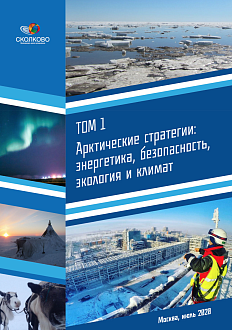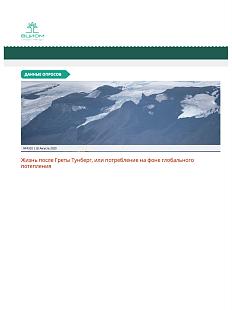The St. Petersburg International Economic Forum has invariably attracted some of the world’s greatest minds. Nowhere was this more apparent than at SPIEF 2016, which hosted a meeting of Nobel laureates entitled «What Will the Mid-21st Century Look Like?» Below are some of the topics covered by Nobel laureates at other sessions.
Global warming and the climate
Rodney John Allam, Nobel Peace Prize Laureate; Chief Technology Officer, Net Power LLC[1]: CO2 emissions are a particular problem because of the mechanism for natural removal of CO2 in vegetation and the formation of minerals such as carbonates is very slow. And CO2 we emit now will persist for hundreds to thousands of years. And this could be our permanent legacy to our descendants.
Jean Jouzel, Nobel Price for Peace; Vice President, Intergovernmental Panel on Climate Change (IPCC): If we do nothing, we go towards warming of 4 to 5°C on average at the end of this century. We can continue to add 6°C at the end of next century. And this will have a lot of adverse consequences, this is clear. It is a challenge to tackle global warming to keep below 2°C.
Rae Kwon Chung, Nobel Peace Prize Laureate; Advisor to the Chairman, High-Level Experts and Leaders Panel on Water and Disasters, United Nations: Global challenges are becoming ever more serious. <...> This is true of sustainable development and climate change. <...> I worked at the Intergovernmental Panel on Climate Change, and we reached the conclusion that this was an area where scientists could work freely and collaborate very closely, without any major restrictions from the political arena.
Riccardo Valentini, Nobel Peace Prize Laureate; Professor, University of Tuscia: We have to call for new agriculture and new agricology. A lot of organic waste can be recycled and new technologies are coming out that produce gas and energy <...> so that business will be better and also it will be good for the environment.
What helps and what hinders the development of technology
Rodney John Allam: Technologies can give us a solution, but this is just the first small step. The next one is crucial: we need to develop profitable application — I would like to stress it — it needs to be profitable. <...> There should be a mechanism for companies to invest and later see the return rate.
Rae Kwon Chung: Twenty years ago, when I was working at the UN, I put forward the idea that governments could work together and facilitate collaboration in science and technology through distributing the results of research which had been publicly funded. <...> This could be a cornerstone of global collaboration. <...> There are sectors where commercialization and competition for patents has a strong foothold. Politics is not the only force hindering collaboration today. Commercialization also hinders collaboration between scientists based in different countries, due to issues related to patents and industries.
Global challenges
Rodney John Allam: In terms of the energy system, we are looking at 1.3 times the amount of energy consumed in the period from 2015 to 2035. In other words, we are relying on huge growth in productivity of energy efficiency in order to keep down energy consumption.
Riccardo Valentini: Today, the quality of life a real problem. <...> There are 850 million people [all over the world, — Ed.] on the brink of starvation, and this number is growing. The number of people with diabetes, cancer, obesity and cardiovascular diseases is also on the rise. This is a challenge for science. Food is the largest industry in the world. <...> Today it is also healthy food, food for a healthy diet. In this sense, a very serious trend is formed in society, all thanks to knowledge. Issues of control, security of food supply, and just safety of consumption become increasingly important. <...> Russia can possibly be the world’s next big food tank. In 2016–2017, Russia became the number one exporter of wheat in the world. In the future, you’ll have a minimum of 40 million hectares of more land <...> which can be used to respond to the global food crisis.
The science of the future
Zhores Alferov, Nobel Prize Laureate in Physics; Vice-President, Russian Academy of Sciences: To a large extent, the future lies in the development of research in the field of medicine, biology, programming, areas of physics and mathematics, and engineering. Learning will be difficult. <...> Today, in order to train specialists who will serve as the foundation for the development of future technology, it is essential to provide training simultaneously with in-depth training in physics and mathematics, engineering problems, biology and medicine, and software.
Riccardo Valentini: We all have been very much restricted to our own fields — physics, biology, chemistry, mathematics and so on. Now we face the need of bringing all these disciplines together to find solutions for our future.
A change in mindset
Rae Kwon Chung: We need innovation in our economic policy making. Now I think we ought to change the way we think about economy, which means that from my perspective, at the moment we are focusing too much on short-term return, in other word, shorttermism. We are always thinking about what will be the return of our new technology, of our new investment
Riccardo Valentini: So we have to try to optimize our resources. Linear thinking is not working anymore. We will need to have a more systemic thinking. Systemic thinking means that we need to optimize our life, we have to optimize natural resources, our lifestyles, our way in which we use food, for example.
Christopher Pissarides, Nobel Memorial Prize in Economic Sciences Laureate; Professor of Economics, London School of Economics and Political Science (LSE): Now, suppose that we reach this perfect world where robots are doing all the boring jobs, and digital technology is spread everywhere, there is free trade, what economists describe as a kind of ideal state. Where are the jobs going to come from? Well I think there is enormous scope for job creation. Jobs obviously come in the service sector, because the service sector cannot be automated. And the main source of job creation will be what you might call is a person-to-person interaction that will create the jobs. Primary amongst them will be health and care, you cannot have a robot looking after your sick mother, or father, or a child, so the caring sector which is person-to-person interaction is going to create a lot of jobs. And the second big sector that is going to create jobs will be leisure industry. <...> You know, in the Arts, you cannot have a robot give a kind of lecture that you hear here, for example, you cannot have a robot performing theatre, music, you cannot print Mr. Gergiev in a 3D printing and put him on the stage to perform, you need the real person. Because humanity is much more creative when it comes to fine art.
The full recording is available to watch here:
https://roscongress.org/en/sessions/kakaya-ona-seredina-xxi-veka-/translation/
[1] Job titles indicated as at the time the session took place (here and subsequently)


